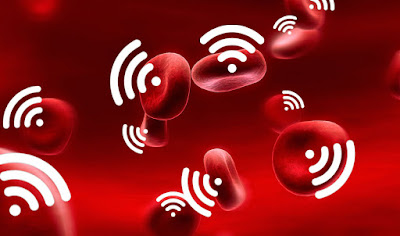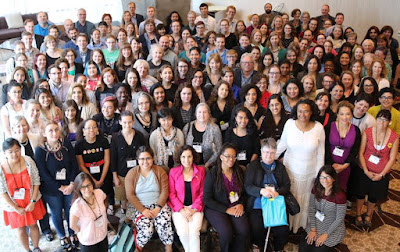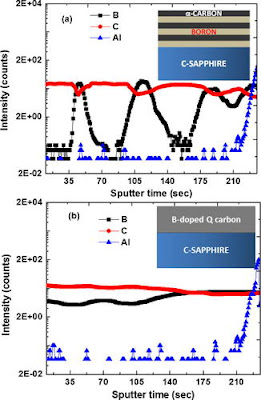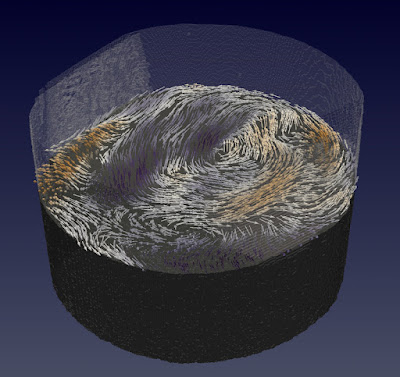All Posts (6505)
 |
| Image Source: Proceedings of the National Academy of Sciences |
Black America" Series to be Produced and Written by Will Packer & Aaron McGruder
"http://afropunk.com/2017/08/hbos-confederate-amazons-black-america-minimize-massive-injustices-u-s-founded
"The Black Count" by Tom Reiss
Sweethome3d is bitter sweet. The one company makes two dark skinned characters that are stiff compared to an assortment of light skinned characters. An after thought, perhaps. Reminds me of my art class days, I was the model for the day and it took three tries and the teacher cursing before cartoonish me gave way to realistic me. Thus we have to present ourselves in digital space ourselves as ourselves. Think this is bad you should see the female, holy ancient mime ma, lean back a little you'll fall forward. OK, I had to rant of the digital space lacks. And this is at you 3d character designers of the dark skin clans. Don't forget regular people characters, you know, the ones who are not unplugged, the walk-ons and walk-bys, movie extras. They are essential in any drama and are cool if you need to show regular black folk living in that fancy modeled house (or spaceship) to a prospective black client. Yeah mon, Nubian I think.
Just for a sneek experiment I found a brown person face map and swapped it with the map on one of the white (there I said it) characters. What a monster (LOL)! We need to be who and what we are in digital space. Alas I am a plug and play guy and so I wait for a crew of pre-posed digital black persons to be free-ware or reasonably priced. I wonder if digital people know they are slaves to sentient beings? Story!!!
So if it is not too much fuss, you could apply SweetHome3D to 3D storyboarding. If you have a more powerful PC than I, I am sure the rendering shots are useful. And by the way Sweethome3d is free. There is no excuse for ones just getting into it to get in on it. And as toys go, this is dollhouses on steroids. I think I am going to insert SketchUP 2d "face-me" figures into sweethome3d, like living with life size paper cutouts, cartoonish effect.
Now read the coded message in the picture. House with roof blown, horse in house but it's cool (shades), dark guy is still in the box, light guy in Armoni and tennis shoes is running things. Who knows, the Shadow do.
The nerd artist life. Hard to describe, I do draw with gel pens and I do fancy a bullet nose marker. The great god Harold and the Purple Crayon (they made a movie, well a cartoon) would be proud.
My tools consist of an XP era desktop and an engineering laptop. They are overworked but hang in there quite well. The laptop has a removable graphics card. It has gone black 5 times and 5 times I have revived it by baking it in the oven. A trick I learned from British PC Techs on U-tube. I also have a 8" tablet that use to be a phone and has no flash for the camera replacing the 10" tablet I can't fix. Android apps are handy.
I am a Linux guy. Nuff said. While the programs it runs are limited in commercial success they excel in freeware, join the league of remarkable programmer projects, open source and sorry it also comes in Mac and Windows versions software.
I know you know about GIMP the not really Photoshop and Inkscape the no where near Illustrator so I won't go there. By the way they work fine for me and they are both free.
I will touch on Sweet Home 3D. It is a JAVA program and it draws your walls in 3d while you draw the floor plan. Then you can add doors and windows and furnishings, trees, cars and whatever else many people have contributed in the way of models. You can alter material colors, map patterns and it does alpha channels. If you need clear or tinted glass, hey.
Then it does rendering from fuzzy and flat to reflections and lights, shadows. I have found that if you design a thing in say SketchUp, you can export DAE/OBJ/KMZ, you can import it into Sweet Home3d and it will be right at home, sweet pun. It will also do walk through movies. Now who said you can do just houses, "this is the construct............." Anyway even though I am not Syd Mead, here is a picture of my artwork in a modeled space and both are my artwork.
And also a sea container studio with windows inspired by Boba Fett's cloner facility apartment. You could model scenes and throw in some 3d characters.
I am not much for fantasy, sometimes sci-fi can be a stretch, a futurist, yeah. For a digital artist it can be rough. The concept of fine art looms large with its smell of oil or the quick drying acrylic glaze. The image of one who holds the brush as it were a light saber. The image of the imager frozen in framonite to hang before the gazers with hand to chin. Mind gawkers, all of them, peering ever so close to see if brush hairs were inadvertently glued to the surface. The gallant gallery head bobbles with cha-ching. Then I bring my digital print. Doesn't matter if it is an eleven by eight point five inch print or forty by sixty foot print, they ask the same question with a slight distain, "where is the original?". I am ready this time, "I have it right here" and whip out a tiny micro dot on a business card. "You really can't see it until you put this in a computer or print it out as a did for your easier viewing." "And I got some fume of linseed oil in a Glade mister. I expect the same respect you give lithographers and photographers and block printers. And no you can't do this on your office printer......................ever!" Wait till they start putting human brains in automatons, "ooh where is the original?"
$400 Needed To Reach Our Goal!!
WE NEED YOUR HELP!!
Our current Kickstarter for TITAN THE ULTRA MAN #2 is underway but we need your support to bring the book to life! We're seeking funds to get the book printed and distributed with only $400 dollars away from meeting our goal. We are so very close but need your support to get to the finish line!
Some of the available rewards for backing the book are shown here along with the cover and interior page art from the TITAN THE ULTRA MAN #2 comic.
A review of the comic by Geekery Magazine can be seen here - http://www.geekerymagazine.com/2017/07/28/review-titan-the-ultra-man-2/
Here's How To Show Your Support:
To bring the comic book to print, the $1,000 funding goal must be met. We are currently halfway towards meeting our goal.
- TITAN THE ULTRA MAN #2 needs more backers and another $400 more in order to get funded.
- To pledge go to https://www.kickstarter.com/projects/260671993/titan-the-ultra-man-2-relaunch?ref=user_menu
- The Kickstarter ends on Monday, August 28, 2017 2:54 PM EDT.
You can pledge as little as ONE DOLLAR - Every dollar counts to making the goal!
Thank you for your time and your support!
Tony Kittrell
Planet of Doom excerpt
By Lawrence Johnson Sr.
It was a dark time for The Planetary Alliance. Two of Princess Arianna’s highly regarded warriors Dajus and Mallobo had gone rogue. Their attacks on the Planetary Alliance and their master computers have thrown the entire galaxy into chaos. Following the attack and destruction of the intergalactic transport ship the Star Lighter and it 8,000 passengers, members of the Planetary Alliance put in a call to Da’Quan, the best intergalactic detective of his time. His job seemed simple, locate Dajus and Mallobo and the alliance would do the rest.
It would be a simple task if it were not for the fact that the two outlaw warriors had the ability to appear and disappear at will. It would be some time before Da’Quan would meet with his new employers. As luck would have it Da’Quan’s ship was forced to crash land on the Planet of Doom.
Just before the crash Da’Quan saw the red flashing lights on the Spirit’s console. He could also hear the warning message constantly blaring over his pa system he named Nano. “Alert, crash imminent, take preventive measures.” Something was pulling his ship down to the planet below. As he struggled to keep his craft airborne Da’Quan noticed a small island up ahead. It was touch and go for a while but Da’Quan was able to get out a distress call to a friend and land his ship without breaking any bones.
The tall dark haired Da’Quan carefully maneuvered his toned six-foot frame into the chair in front of the console. ‘Where the hell am I?’ he asked himself.
After taking a minute to scan his computer charts Da’Quan slumped down into his seat. He took a deep breath and double checked his charts hoping that he had made an error but there was no doubt about it, Da’Quan had landed on Akanon, better known as the Planet of Doom. His only hope was to try and repair his ship and leave before he was discovered.
It was midday, the weather was warm, there were no signs of Artificial Intelligence but within a few minutes Da’Quan could hear voices headed in his direction.
So this year marks the first time ComicCon, the US comics convention, came to Seoul, South Korea. The good Korea (Pyeongyang is the bad one).
"So, who was there, how was it, did you get any good pics?" you're probably wondering.
Lots of shows, not much for the English language viewer. Many of the exhibitors spoke a bit of English, and few were working on English Language projects.
I even got a part time job offer! DynaComics is looking for English writers to transcribe their partner comics. Their Korean translators will change your transcription into Korean language so readers can read it in a special Android/IOS app. I see potential for BSFS comic artists to get their comics in another audience. Swing by dynacomics.com or email support@dynacomics.com if you're interested.
Also I saw the infamous Dark Tower exhibit. I won a ticket in their shooting game. BUT...they had one of their exhibitors in blackface. Honestly, I thought it was orange-face because it was too orange.
Lots of beautiful cosplay- and a lack of groping! I didn't hear or see any groping. Also, the costumes were put together well. Most of the cosplayers used sturdy costumes after the infamous ComicWorld brawl in Busan City when Link fought Tracer and Captain America because they damaged his costume somehow.
And the 501st Legion paid a visit.
If you're into Cosplay, two Cosplay experts from Russia showed up to talk about how they make their stylish and amazing costumes. I took a few videos of their explanation.
I saw quite a few black Cosplayers. A Storm, a Black Panther, a Brock, few others. Everybody gets into the spirit of "adult costume day". LOL
Steven Yeun was the main guest along with a famous Marvel artist. Mikkelson I think. I didn't spend the extra money to see them. Not really my thing. He got amazing crowd support.
There wasn't much in the way of food, but there was Shwarma, the mideastern food eaten at the end of Avengers. Mine was cold. Was it supposed to be cold? But no matter. COEX has a large food court and many upscale places to eat, so why bother selling food?
Saw some VR activities. You'll be seeing more of those in the future.
My drone piloting could use some work. It flew out of the tent and attacked random people walking by.
Everybody was pretty excited to be there. It was packed but it wasn't an elbow grinder like the other ComicCons are.
Would I go again? Sure!
Should BSFS spend $3,000 on a booth for three days? Well...we'd need one helluva product to make back what we spent.
These overseas events are a lot of fun! If you're patient and want to learn artistic things, they can be useful as well.
Print Edition and E-Book Available
Lt. Curt Masters, a Tuskegee Airman, is flying a combat mission over the skies of Nazi Germany in 1945. He encounters an alien craft. He engages the craft unsuccessfully. Soon, he is aboard the UFO and is charged with Obstruction of Galactic Operations. He and the people of earth are on trial for their survival. Can Curt Masters free himself from over a billion miles away? Will he ever return home? Or will he die at the hands of The Warlord. In this new universe, he meets Aliena-a Galactic Police officer, Sutter-a mysterious friend or foe and ARC, who is an android without a will of his own. Curt will learn that once you Look Forward you can Never Go Back. Written by Chris Love, this graphic novel offers new worlds and possibilities. A companion feature film has been adapted from this graphic novel.
Short Stories from the Spiral Galaxy: Featuring Intergalactic Detective Da'Quan
Audiobook – Unabridged
 |
| A pair of nearby galaxies where "intergalactic transfer" may be happening. (Fred Herrmann) |
 |
| Conceptual illustration by Yuen Yiu, staff writer Image credits: zhouxuan12345678 via flickr/CC BY-SA 2.0 |
 |
| A true-colour image containing around 8 × 105 RGB subpixels directly photopatterned using Cs2N3– capped quantum dots. Scale bar, 5 mm. Courtesy: D Talapin |
| Images Source: Link below |
Topics: Astrophysics, Black Holes, Einstein, General Relativity, Diversity in Science, Women in Science
Black-Hole Hunter Takes Aim at Einstein, Joshua Sokol, Quanta Magazine
 |
| The Women in Astronomy IV conference was held in Austin, Texas, following the American Astronomical Society meeting in June. Credit: J. Hellerman, NRAO/AUI/NSF |
CONSTANT "RE-REGURGITATION"....NO NEW IDEAS, and too Arrogant and Selfish to Breed and Establish any "BOLD/NEW/EXCITING" Franchise Brands and IDEAS; Hollywood has some "Changing to DO!"
CONSTANT "RE-REGURGITATION"....NO NEW IDEAS, and too Arrogant and Selfish to Breed and Establish any "BOLD/NEW/EXCITING" Franchise Brands and IDEAS; Hollywood has some "Changing to DO!"
WANT to SEE SOME "ALL NEW ORIGINAL" Franchise Brands and IDEAS; HERE WE ARE!
WE do NOT "COPYCAT" off of Marvel/DC/DISNEY/IMAGE or Others; "YES", Those GIANTS "INSPIRED/INSPIRE US"; BUT we Create/Write and Develop OUR OWN NEW/EXCITING/COPYRIGHTED" Franchise Brands and Characters/////
we "HONOR" WOMEN & MOMS, and MILITARY Females with our NEW, EXCITING "G.i.J.i.M.O.M." Series: http://thesiborg.com/ http://familymediasite.com/ http://tdmcomics.com/ http://post-up.me/
http://www.hollywoodreporter.com/…/box-office-hollywoods-fr…
Box Office: Hollywood's Franchise Crisis Worsens Over July Fourth


